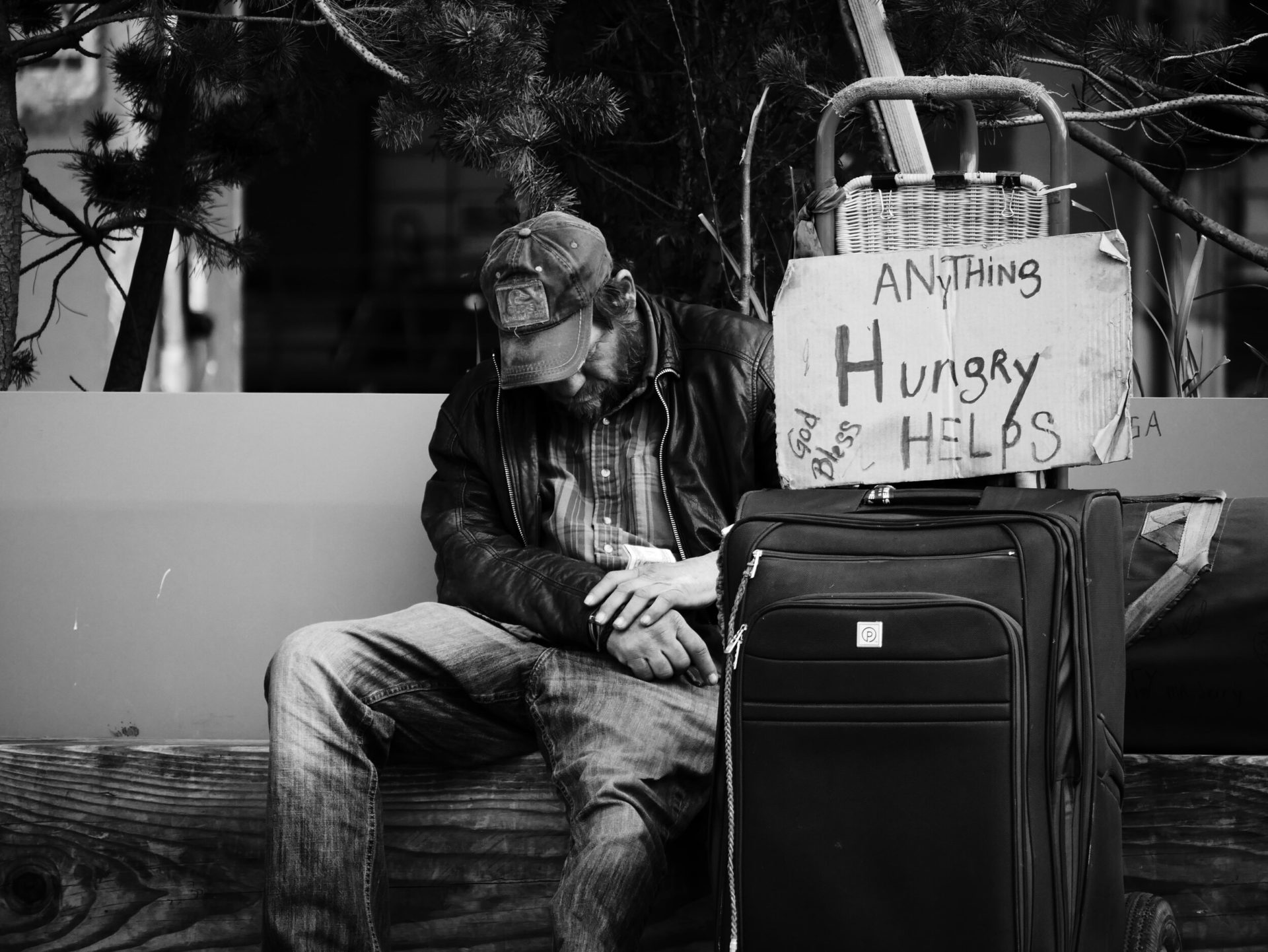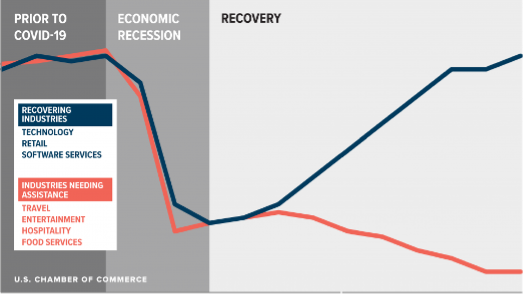
We are 20 months into the coronavirus pandemic and nine months into the vaccination campaign against it. As of this March, our nation’s GDP officially returned to pre-pandemic levels, and unemployment is falling. But as our country’s economy is recovering, it is important to ask who it is recovering for. Further data indicates that the economy is only returning to normal for America’s upper and middle classes, leaving behind citizens on the lower end – forming a “K-shaped” recovery.
To begin to discuss what a K-shaped recovery is one must start at the simple fact that the world has never been and will never be equal. These inequalities existed before the pandemic, of course, but the strain that the virus placed on all of our institutions revealed – and exacerbated – these glaring differences. Previously, I wrote about the ethno-racial and economic inequalities of COVID-19 incidence and mortality in the US and the unequal vaccination coverage in a state.
And unfortunately, a recovery from the pandemic will not be equal either. A recovery is likely to take the shape of letter “K.” According to a recent report by the US Chamber of Commerce, the notion of a V-shaped recovery—a deep economic decline followed by a sharp rebound—is now replaced by a type of recovery that is vigorous for some but sluggish or even freefalling for others.

As the figure indicates, economic performance was robust for all prior to the pandemic, which was followed by a recession when everyone uniformly suffered some form of economic decline. But when it comes to the period of recovery, we see two groups move in diverging directions.
When discussing a K-shaped economic recovery, it is important to first determine what is being recovered. Typically, recovery is measured by certain economic indicators. Such as employment rate, GDP, income, revenue, or growth in any of the above. However, it also can describe other important performance indicators outside of the economic realm. For example, we may want to describe the changing trends of overall mortality/morbidity rate, cause-specific mortality/morbidity rate, or life expectancy in the different phases of a pandemic. The chosen indicator can even be a type of educational or learning outcome.
Once we have chosen an indicator, we must then watch what pattern it takes during a K-shaped economic recovery. Some describe the “K” as a story of the rich getting richer and the poor getting poorer – the high road and the low road. But on a more fundamental level, it is a story of diverging paths, followed by different groups.
Diverging trends portrayed by a stereotypical K-shape, however, may not be realistic for many economic performance indicators. Take employment rate, for instance. For those who lost their jobs during the pandemic, there would be no further place for them to freefall. Wage can be another example since people who experienced lower wages due to the pandemic may still experience some recovery later.
Here is an example of employment rate: Analyzing February to November 2020 data from the Current Population Survey, a group of researchers from the US Bureau of Labor Statistics reported in a recent issue of the Journal of Economic Inequality that workers with the lowest wage before the onset of the pandemic suffered a larger share of employment declines at the beginning of the economic recession, and furthermore, continued to experience slower growth in employment when employment opportunities began to increase.
Yes, there was some recovery for those on the low road, but it was much less than those on the high road, thus creating the widening fork of the “K.”
So, who takes the high road and who takes the low road? A “K-shaped” graph can apply to various types of groups or individuals, i.e., unit of analysis. Those who take the divergent paths of recovery can be countries, states, provinces, counties, industries (as shown in the figure), occupations, social such as ethno-racial groups, or persons of different segments of the income spectrum.
The unit of analysis for a K-shaped recovery can even be school districts or systems, according to a recent report by the International Society for Technology in Education: Different school systems on the diverging paths try to recover to different degrees from the depth of the pandemic when online instruction was the only choice.
The two divergent groups can consist of countries. The New York Times reported earlier this year that a K-shaped recovery is playing out worldwide, with many wealthy nations poised for a major economic expansion in 2021 while other nations are struggling. This divergence is being amplified by the sluggish deployment of vaccines in underdeveloped countries.
But even if we look domestically, the sad truth is that a diverging recovery exists within a wealthy nation like ours. High earners – especially those of the top 1% – suffered the least during the pandemic and are bouncing back the quickest. Just like the post-2008 recovery, these high earners are also poised to reap more benefit from a recovery. Those on the bottom will continue to struggle, mired in a recovery of a slower tempo and a lesser rate, with their ranks increased.
This is the story of a K-shaped recovery, a story of widening inequality, and a likely experience being shared by many from around the world.






